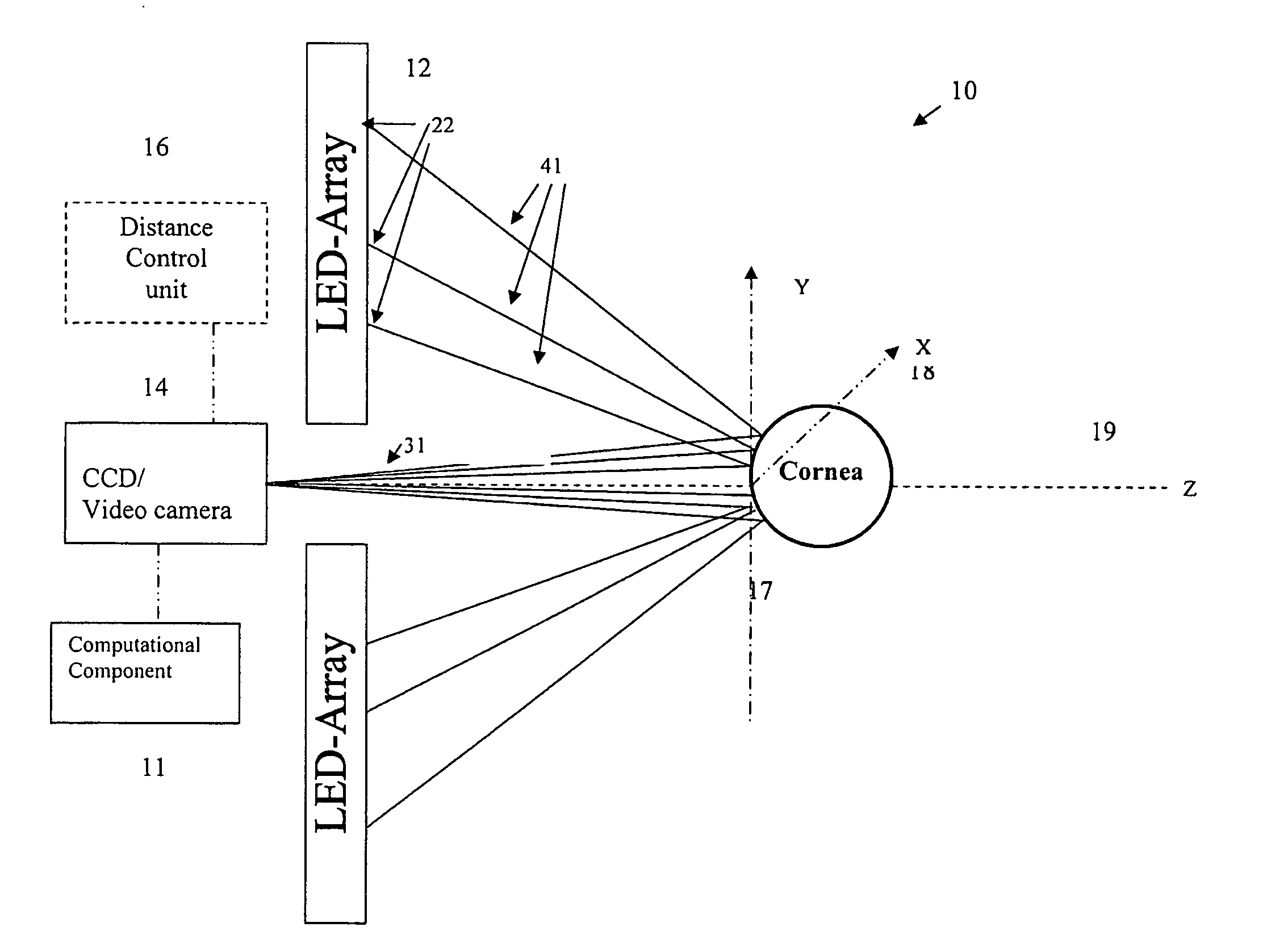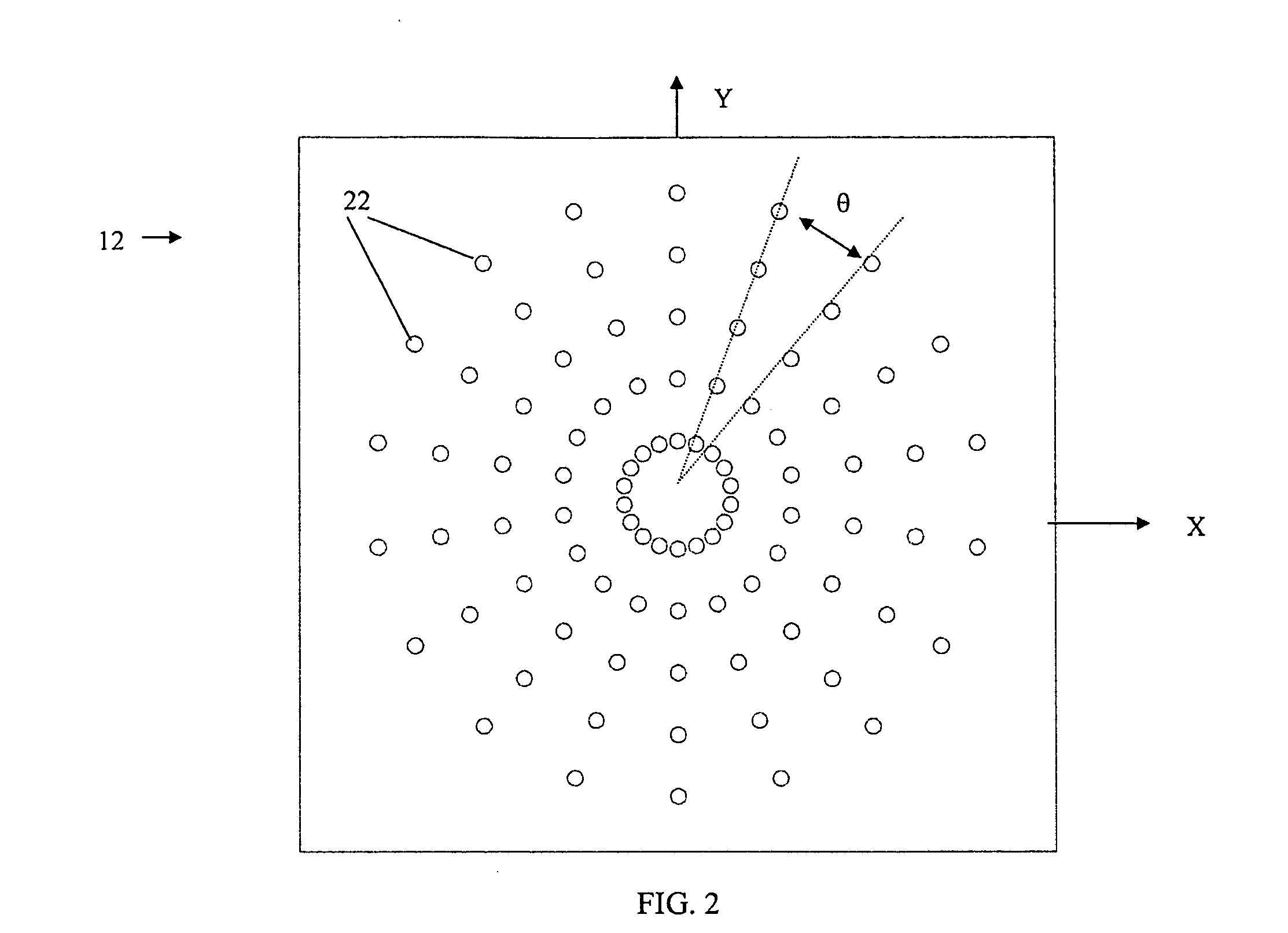Apparatus and method for topographical parameter measurements
a topographical parameter and measurement method technology, applied in the field of topography measurement and diagnostic ophthalmology, can solve the problems of inability to analyze data, inability to examine the central 1-1.5 mm region of the cornea, and high cost, and achieve the effect of improving the accuracy of topographical measuremen
- Summary
- Abstract
- Description
- Claims
- Application Information
AI Technical Summary
Benefits of technology
Problems solved by technology
Method used
Image
Examples
Embodiment Construction
[0029] Embodiments of the invention are not limited to ophthalmic related apparatus and methods; however, since ophthalmic corneal topographical measurement is a principal application, the description of the various embodiments will exemplify ophthalmic applications.
[0030]FIG. 1 schematically shows an exemplary ophthalmic topographical parameter measuring device 10. As used herein, the term ‘topographical parameter’ refers to any of a variety of known parameters including, but not limited to, surface curvature, corneal power, K-readings and elevation as these terms are understood in the art. As used herein, the term ‘topography’ of a surface will refer to the surface curvature; accordingly, elevation will be topographical data but will be considered distinct from topography (curvature). The device 10 includes a measurement surface illuminator 12 having a central paraxial aperture 31. The surface illuminator 12 lies in an X-Y plane that is perpendicular to a Z-coordinate axial measu...
PUM
 Login to View More
Login to View More Abstract
Description
Claims
Application Information
 Login to View More
Login to View More - R&D
- Intellectual Property
- Life Sciences
- Materials
- Tech Scout
- Unparalleled Data Quality
- Higher Quality Content
- 60% Fewer Hallucinations
Browse by: Latest US Patents, China's latest patents, Technical Efficacy Thesaurus, Application Domain, Technology Topic, Popular Technical Reports.
© 2025 PatSnap. All rights reserved.Legal|Privacy policy|Modern Slavery Act Transparency Statement|Sitemap|About US| Contact US: help@patsnap.com



